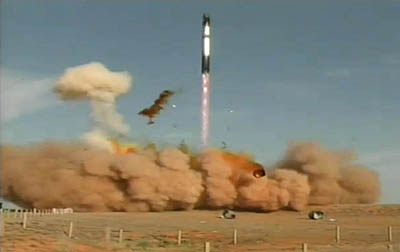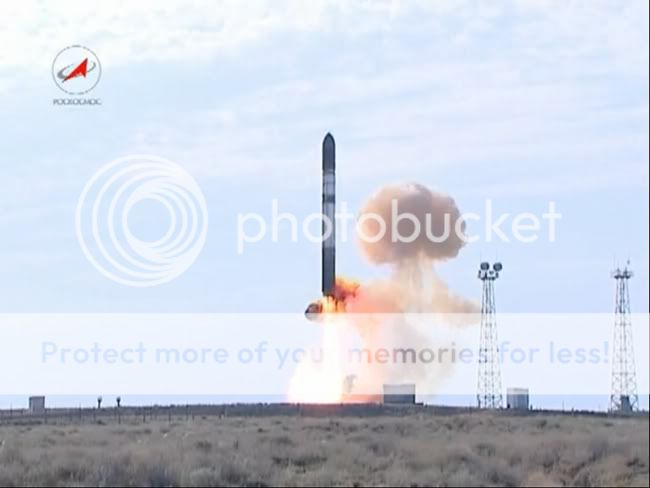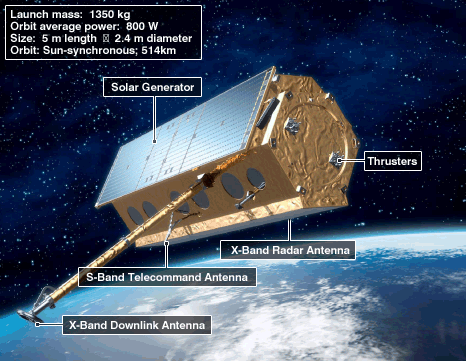Z
Zipi
Guest
Launch time: 02:14 GMT on 21st (10:14 pm EDT on 20th)
Launch site: Baikonur Cosmodrome, Kazakhstan
An ISC Kosmotras Dnepr rocket will launch the TanDEM-X satellite for the German Aerospace Center (DLR) and Astrium. TanDEM-X stands for TerraSAR-X add-on for Digital Elevation Measurement. The satellite will fly in close formation with the TerraSAR-X spacecraft launched in 2007 to gather precise elevation data.
TanDEM-X
orb has posted a great package to Orbiter Forum: http://www.orbiter-forum.com/showthread.php?t=16461 (plenty of nice photos)
TerraSAR-X Wikipedia Article: http://en.wikipedia.org/wiki/TerraSAR-X#The_future
EADS Astrium TanDEM-X Brochure: http://www.astrium.eads.net/media/docum ... m-x_en.pdf
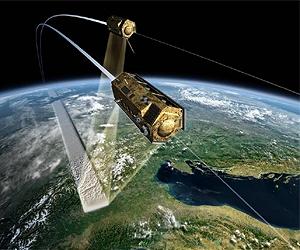
TanDEM-X Arrives to Baikonur:
[youtube]http://www.youtube.com/watch?v=Ck57eqU9qko[/youtube]
Live Streaming
German Aerospace Center: http://www.livestream.com/dlrgermanaerospacecenter
TanDEM-X Launchcast: http://infoterra.de/tandem-x-launchcast.html
DLR Portal - Early Bird Special: http://www.dlr.de/en/desktopdefault.asp ... ead-25089/
TV Tsenki Live1: http://www.tv-tsenki.com/live.php
TV Tsenki Live3: http://www.tv-tsenki.com/live3.php (usually better than Live1)
Dnepr Launch Vehicle
ISC Kosmotras Dnepr Launch Vehicle Page: http://www.kosmotras.ru/en/rn_dnepr/
ISC Kosmotras Dnepr Program Page: http://www.kosmotras.ru/en/program_dnepr/
Astronautix Dnepr Infos: http://www.astronautix.com/lvs/r36m.htm#Dnepr
Dnepr Wikipedia Article: http://en.wikipedia.org/wiki/Dnepr_rocket
NPO InterCoS Dnepr LV Page: http://www.npointercos.jp/DneprLV.html

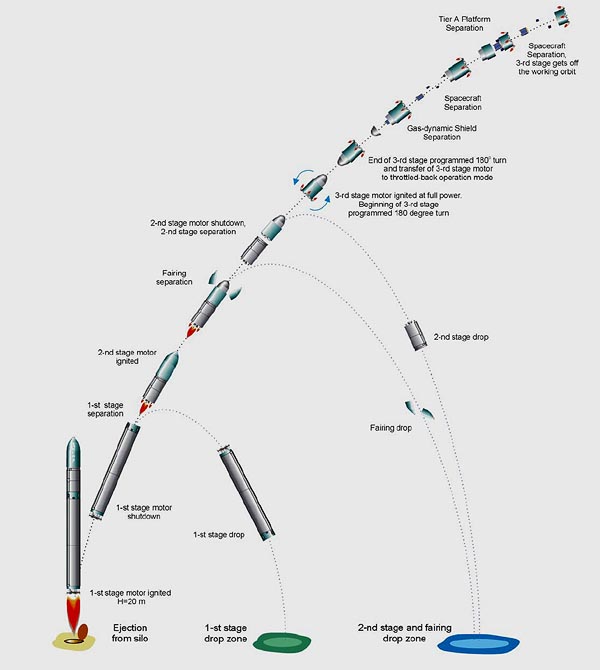

Ejection from silo/canister
GAS generator ejects Dnepr out from its silo or canister.
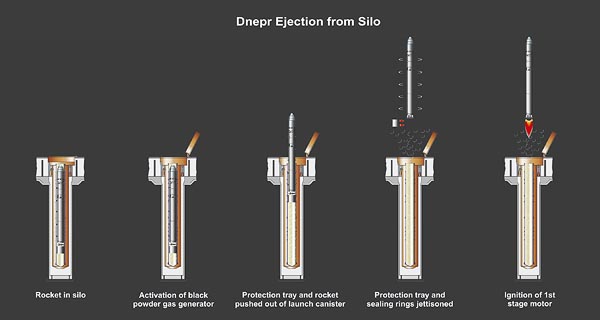

First Stage
One RD-264 engine burning N[sub]2[/sub]O[sub]4[/sub]/UDMH
Astronautix RD-264 Page: http://www.astronautix.com/engines/rd264.htm

Second Stage
One RD-0255 engine burning N[sub]2[/sub]O[sub]4[/sub]/UDMH
Astronautix RD-0255 Page: http://www.astronautix.com/engines/rd0255.htm
RD-0255 Manufacturer KBKhA: http://www.kbkha.ru/?lang=en
Third Stage
One RD-869 engine burning N[sub]2[/sub]O[sub]4[/sub]/UDMH
Astronautix RD-869 Page: http://www.astronautix.com/engines/rd869.htm
RD-869 Designer Yuzhnoye: http://www.yuzhnoye.com/?lang=en
Baikonur Kosmodrome
Baikonur Kosmodrome Wikipedia Article: http://en.wikipedia.org/wiki/Baikonur_Cosmodrome
Russianspaceweb Baikonur Page: http://www.russianspaceweb.com/baikonur.html
Russianspaceweb Baikonur Downrange Page: http://www.russianspaceweb.com/baikonur_downrange.html
Russianspaceweb Baikonur Facilities Page: http://www.russianspaceweb.com/baikonur_facilities.html
Historical Photos from Baikonur Kosmodrome: http://www.buran.ru/htm/baykonur.htm
NASA's Baikonur Page: http://www.nasa.gov/mission_pages/stati ... konur.html
Google Maps Link: http://maps.google.com/maps?t=h&q=45.96 ... 30341&z=15
Baikonur-info.ru: http://translate.google.com/translate?j ... l=ru&tl=en
(without Google Translation: http://www.baikonur-info.ru/)

Launch site: Baikonur Cosmodrome, Kazakhstan
An ISC Kosmotras Dnepr rocket will launch the TanDEM-X satellite for the German Aerospace Center (DLR) and Astrium. TanDEM-X stands for TerraSAR-X add-on for Digital Elevation Measurement. The satellite will fly in close formation with the TerraSAR-X spacecraft launched in 2007 to gather precise elevation data.
TanDEM-X
orb has posted a great package to Orbiter Forum: http://www.orbiter-forum.com/showthread.php?t=16461 (plenty of nice photos)
TerraSAR-X Wikipedia Article: http://en.wikipedia.org/wiki/TerraSAR-X#The_future
EADS Astrium TanDEM-X Brochure: http://www.astrium.eads.net/media/docum ... m-x_en.pdf

TanDEM-X Arrives to Baikonur:
[youtube]http://www.youtube.com/watch?v=Ck57eqU9qko[/youtube]
Live Streaming
German Aerospace Center: http://www.livestream.com/dlrgermanaerospacecenter
TanDEM-X Launchcast: http://infoterra.de/tandem-x-launchcast.html
DLR Portal - Early Bird Special: http://www.dlr.de/en/desktopdefault.asp ... ead-25089/
TV Tsenki Live1: http://www.tv-tsenki.com/live.php
TV Tsenki Live3: http://www.tv-tsenki.com/live3.php (usually better than Live1)
Dnepr Launch Vehicle
ISC Kosmotras Dnepr Launch Vehicle Page: http://www.kosmotras.ru/en/rn_dnepr/
ISC Kosmotras Dnepr Program Page: http://www.kosmotras.ru/en/program_dnepr/
Astronautix Dnepr Infos: http://www.astronautix.com/lvs/r36m.htm#Dnepr
Dnepr Wikipedia Article: http://en.wikipedia.org/wiki/Dnepr_rocket
NPO InterCoS Dnepr LV Page: http://www.npointercos.jp/DneprLV.html



Ejection from silo/canister
GAS generator ejects Dnepr out from its silo or canister.


First Stage
One RD-264 engine burning N[sub]2[/sub]O[sub]4[/sub]/UDMH
Astronautix RD-264 Page: http://www.astronautix.com/engines/rd264.htm
Second Stage
One RD-0255 engine burning N[sub]2[/sub]O[sub]4[/sub]/UDMH
Astronautix RD-0255 Page: http://www.astronautix.com/engines/rd0255.htm
RD-0255 Manufacturer KBKhA: http://www.kbkha.ru/?lang=en
Third Stage
One RD-869 engine burning N[sub]2[/sub]O[sub]4[/sub]/UDMH
Astronautix RD-869 Page: http://www.astronautix.com/engines/rd869.htm
RD-869 Designer Yuzhnoye: http://www.yuzhnoye.com/?lang=en
Baikonur Kosmodrome
Baikonur Kosmodrome Wikipedia Article: http://en.wikipedia.org/wiki/Baikonur_Cosmodrome
Russianspaceweb Baikonur Page: http://www.russianspaceweb.com/baikonur.html
Russianspaceweb Baikonur Downrange Page: http://www.russianspaceweb.com/baikonur_downrange.html
Russianspaceweb Baikonur Facilities Page: http://www.russianspaceweb.com/baikonur_facilities.html
Historical Photos from Baikonur Kosmodrome: http://www.buran.ru/htm/baykonur.htm
NASA's Baikonur Page: http://www.nasa.gov/mission_pages/stati ... konur.html
Google Maps Link: http://maps.google.com/maps?t=h&q=45.96 ... 30341&z=15
Baikonur-info.ru: http://translate.google.com/translate?j ... l=ru&tl=en
(without Google Translation: http://www.baikonur-info.ru/)



